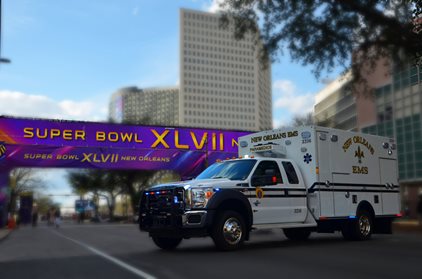 New Orleans Medical Emergency Services is dedicated to providing the highest quality pre-hospital emergency care to individuals living in and visiting New Orleans.
New Orleans Medical Emergency Services is dedicated to providing the highest quality pre-hospital emergency care to individuals living in and visiting New Orleans.
As public servants, EMS provides time-sensitive, medically-sound and respectful, compassionate delivery of this pre-hospital health care.
Our History
Emergency Medical Services in the City of New Orleans has a long history, one which continues to impress today. Some of the earliest documented efforts at EMS began in the early 1900’s with hospital-based horse-drawn ambulances. The service was run by Charity Hospital and was headquartered on Tulane Avenue at the downtown-lakeside corner of South Villere Street. Charity, along with Cincinnati General and Grady Hospital in Atlanta were among the first hospitals to run emergency medical services in the country. In 1907 the Ambulance Service answered 1,929 calls with an average response time of twenty-eight minutes.
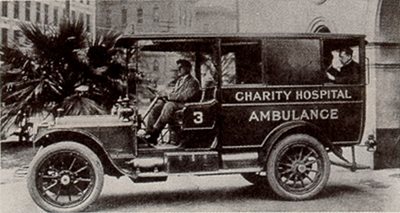 Charity Ambulance of 1911
Charity Ambulance of 1911
|
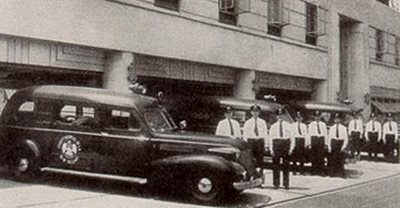 Charity Hospital Ambulance fleet and crews of 1940
Charity Hospital Ambulance fleet and crews of 1940
|
Charity hospital was not the only public ambulance service in the city; the New Orleans Fire Department also operated an ambulance section.
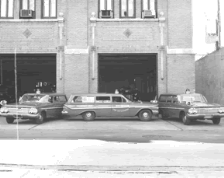 Fire Department Emergency Units in 1961
Fire Department Emergency Units in 1961
|
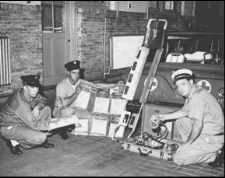 Fire Department Emergency Unit #1, 1963
Fire Department Emergency Unit #1, 1963
|
Eventually, Emergency Medical services was taken over by the New Orleans Police Department.
Emergency Medical Service Division of NOPD
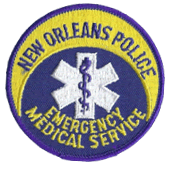 The Emergency Medical Service Division came into being with NOPD in 1947. The rescue unit of the era was known as the "Crash Truck" because its primary duty was to extricate trapped automobile crash victims and provide first aid. Many New Orleanians of that generation still refer to the ambulances and rescue units of EMS as the “crash truck.”
The Emergency Medical Service Division came into being with NOPD in 1947. The rescue unit of the era was known as the "Crash Truck" because its primary duty was to extricate trapped automobile crash victims and provide first aid. Many New Orleanians of that generation still refer to the ambulances and rescue units of EMS as the “crash truck.”
The Crash Truck was not solely responsible for extrications from automobile accidents and providing first aid. It served in a spectrum of areas; taking on the duties of bomb disposal, diving, underwater rescue, operating the department's only patrol boat, rolling on SWAT calls, and psychiatric emergencies. Only twelve police officers were assigned to the Crash Truck during this period.
Emergency Medical Technician (EMT) training became available in the early 1960's, and the size of New Orleans EMS grew along with the population. After advanced level paramedic training became available in this area in the mid 1970's, the first two New Orleans Police Department paramedics graduated from Tulane Medical School in 1979. It was this year that the city administration made the decision to change the nature of employees in the division and replace police officers with civilian EMT's, as employees moved on through attrition. Purview of all other non-medical function NOPD was turned over to the Special Operations Division.
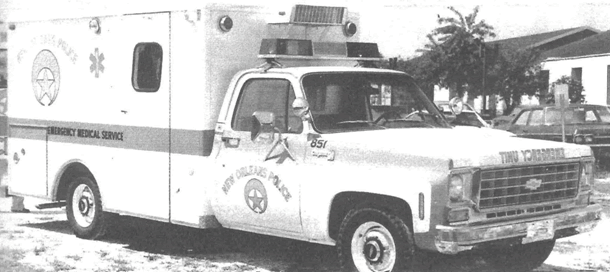 NOPD EMS Unit in 1977
NOPD EMS Unit in 1977
Transfer to New Orleans Health Department
On July 1st, 1985, NOPD EMS was transferred to the control of the New Orleans Health Department under the direction of Marline Parr and it was known for years thereafter as NOHD EMS.
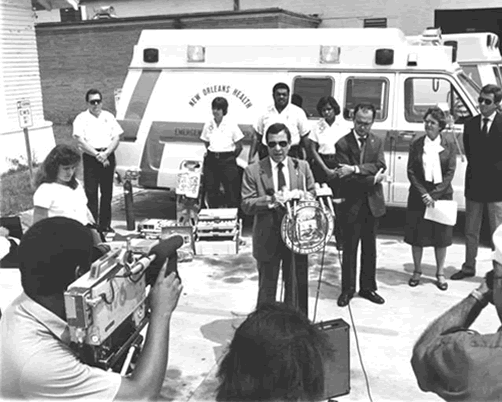 Mayor Ernest N. Morial (speaking), Dr. Brobson Lutz, Director of Health (at Mayor's left).
Mayor Ernest N. Morial (speaking), Dr. Brobson Lutz, Director of Health (at Mayor's left).
Medics in the back from left to right: Butch Swanner, Ann Alcazar, Lester Daggs and Joann Staple.
The next year, on January 1st, 1986 NOHD EMS underwent another change in management. A management group named GMKO was contracted by New Orleans' Health Department to administer EMS and Dawne Orgeron was named the director of NOHD EMS. GMKO also offered EMT and Paramedic education, and turned out numerous classes of new advanced-level Emergency Medical Technicians.
The service remained headquartered at NOPD Special Operations Division at 1700 Moss Street until 2005, when Hurricane Katrina all but destroyed the entire facility. On January 1st, 2005 Dr. Jullette Saussy was named Director of NOHD EMS.
Hurricane Katrina
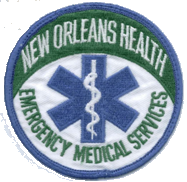 Eight months later, New Orleans was hit by Hurricane Katrina, followed closely by Hurricane Rita, devastating the vast majority of New Orleans. Katrina, Rita and their aftermath proved to be some of the most difficult times not only for New Orleans EMS, but for every city service, not to mention the thousands of affected private citizens. Recovery from this disaster is still ongoing.
Eight months later, New Orleans was hit by Hurricane Katrina, followed closely by Hurricane Rita, devastating the vast majority of New Orleans. Katrina, Rita and their aftermath proved to be some of the most difficult times not only for New Orleans EMS, but for every city service, not to mention the thousands of affected private citizens. Recovery from this disaster is still ongoing.
After Katrina, the command structure of EMS was changed. Rather than command originating in the Health Department, EMS was placed under the umbrella of Homeland Security, with Col. Terry Ebbert as the local Homeland Security officer. Today, EMS' budget still resides within New Orleans Health Department, though operations fall within the scope of New Orleans Office of Homeland Security and Emergency Preparedness. Today the service is referred to simply as New Orleans EMS.
For the next four and one half years, Dr. Saussy lead the rebuilding of New Orleans EMS and has transformed the department into what it is today.

Recent History
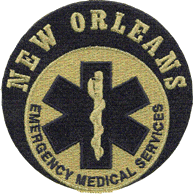
In September 2010, following the resignation of Dr. Saussy, Dr. Jeffery Elder was named Director / Medical Director of New Orleans EMS. Prior to serving as Director of EMS, Dr. Elder volunteered as a physician with EMS before entering the in the EMS fellowship program.
New Orleans EMS has been recognized internationally in the last several decades. As most know, New Orleans has one of the highest trauma rates in the United States, providing our medics constant challenges and opportunities for unique experiences. These opportunities have not gone unrecognized by the rest of the community of emergency services. New Orleans EMS has conducted numerous paramedic programs for the military, particularly the Air Force, because of the extraordinarily high volume of trauma seen in the city. In addition, EMS has hosted programs for new medical students attending LSU and Tulane medical schools to “ride along” with EMS in their first year of medical school. Physicians completing their residency at LSU Medical Center (University Hospital) are able to work alongside our EMT's as on-scene medical control. Such physicians are able to direct care, provide Rapid-Sequence Intubation (RSI) when needed and perform advanced techniques in the field, such as surgical cricothyrotomies. Through the city's “Vigor Volunteer” program, qualified EMT's of all levels can also ride along with street crews and function as part of the team, providing direct patient care. It is through the “Vigor” program that many new hires are selected, and our staff currently boasts personnel from across the nation. Many of our staff moved here specifically because of New Orleans EMS' reputation and fulfilled a desire to serve at one of the busiest and most unique services in the country.
Every ambulance on the streets has at least one paramedic on board, trained in Advanced Cardiac Life Support, Pediatric Advanced Life Support, Prehospital Trauma Life Support, Haz-Mat Operations and CPR. New Orleans EMS also provides rescue operations across a broad scope of functionality. We have a swift water rescue team, a bike team, and a high-angle rescue team. Each shift is staffed with a paramedic specifically assigned to and trained for vehicle rescue and extrication and we have two rescue vehicles outfitted specifically for this purpose. In addition, vehicles are staff sprinted and manned by paramedics and NOEMS fellows who are Emergency Medicine Physicians. These physicians respond even more quickly to scenes where additional help or advanced techniques may be required. All our staff is offered the opportunity to provide EMS coverage at large events, such as Mardi Gras, sporting events, conventions and the numerous festivals for which New Orleans is famous.
As New Orleans continues to recover from Hurricane Katrina, the population continues to change and grow, bringing new challenges to all its first responders.
In mid 2018, Dr. Emily Nichols is appointed to be the new Medical Director/Director of NOEMS. As Dr. Nichols begins her journey with NOEMS, she appoints William Salmeron as Chief of EMS. Together, they have visions to improve equipment, protocols, wages and to implement mental health for EMS personnel.
After 4 years, Dr. Nichols leaves EMS, leaving Deputy Medical Director, Dr. Meg Marino as Interim Medical Director/Director of EMS. Dr. Marino and Chief Salmeron contine the mission to increase pay and resources for NOEMS personnel.
EMS will likewise continue to grow and adapt to the changing population, adopting more and more advanced equipment and techniques. It is with great pride that every one of our EMT's serves and strives to continue to make New Orleans Emergency Medical Services the very best in the world.
